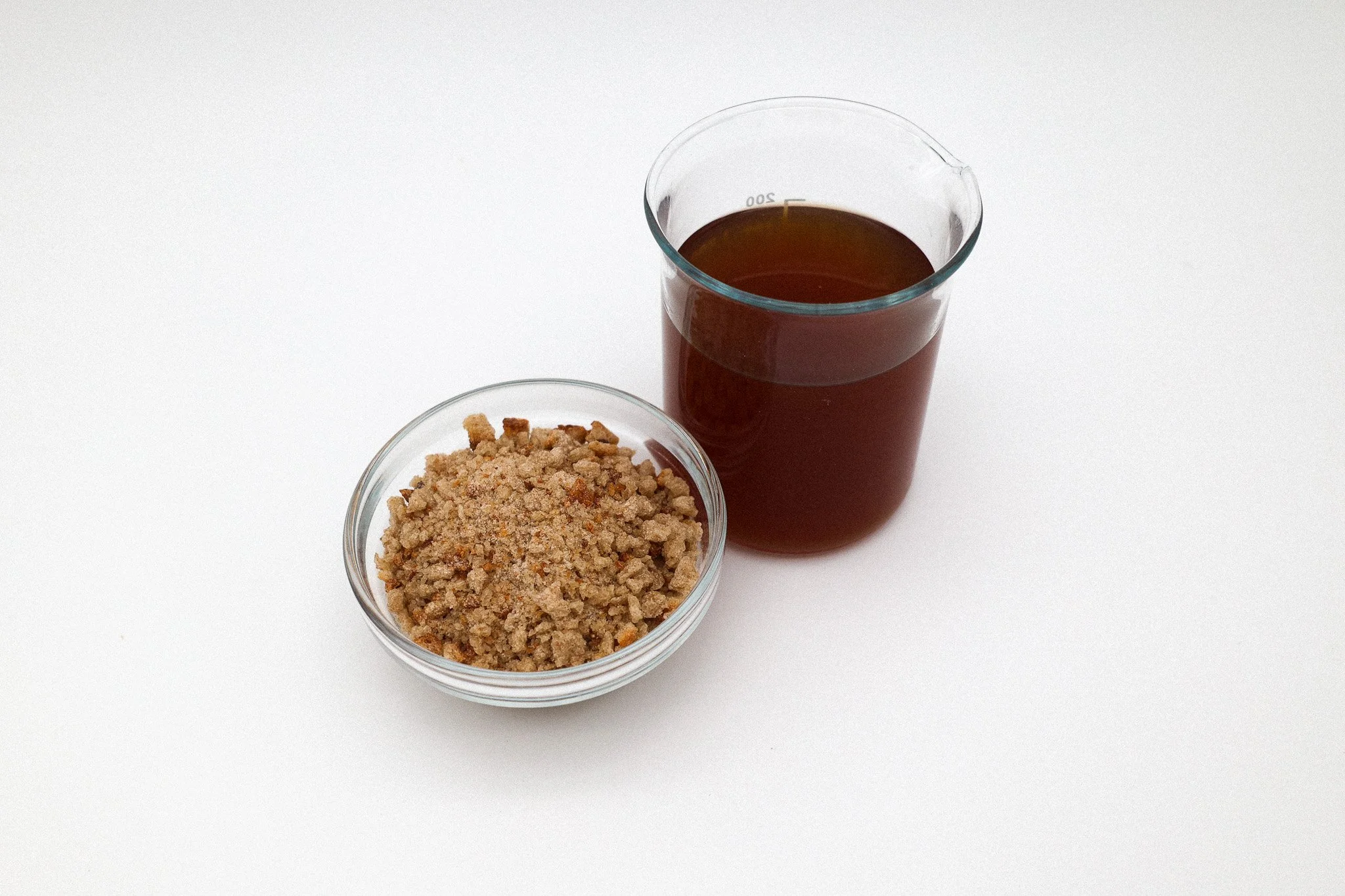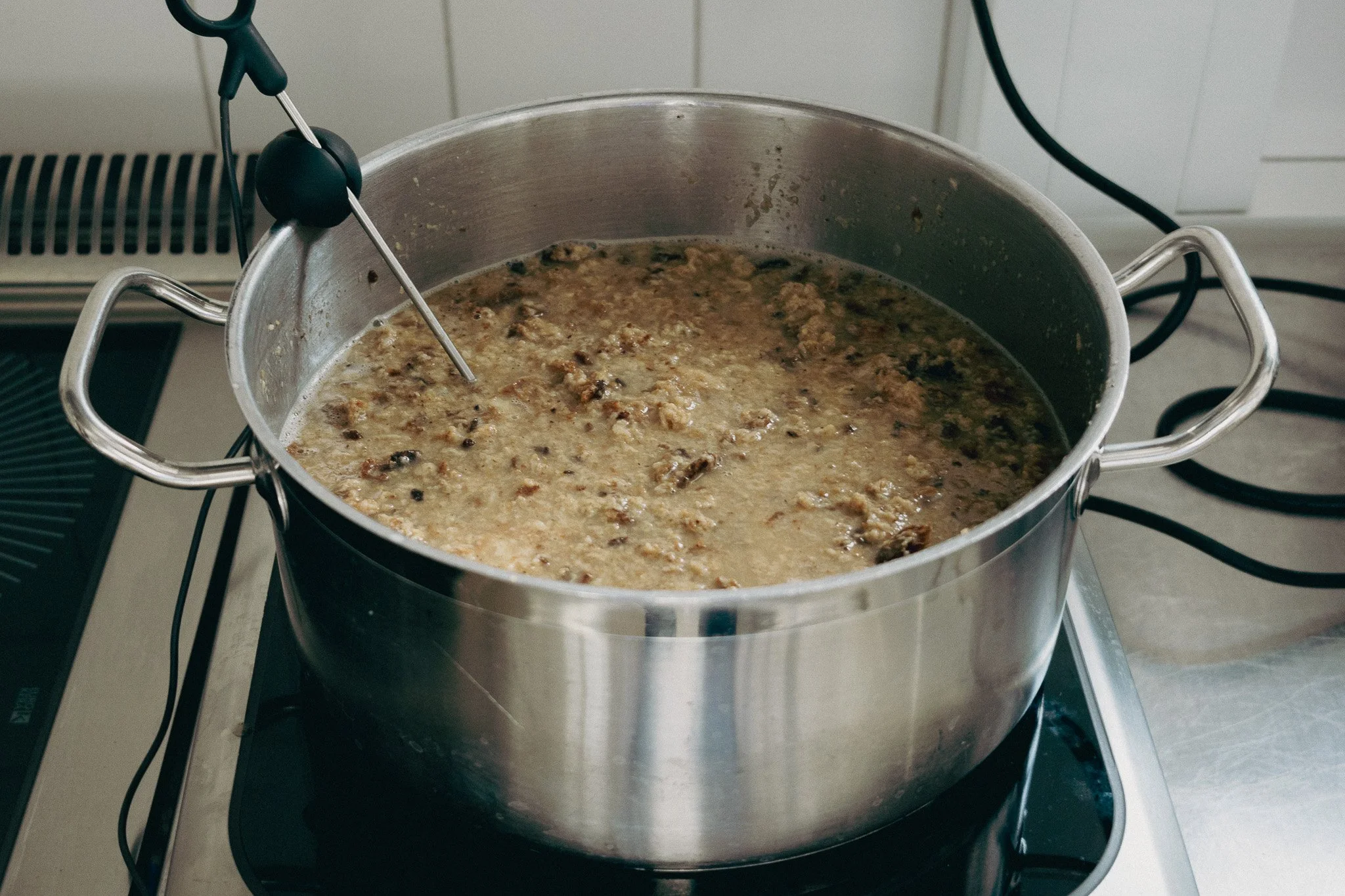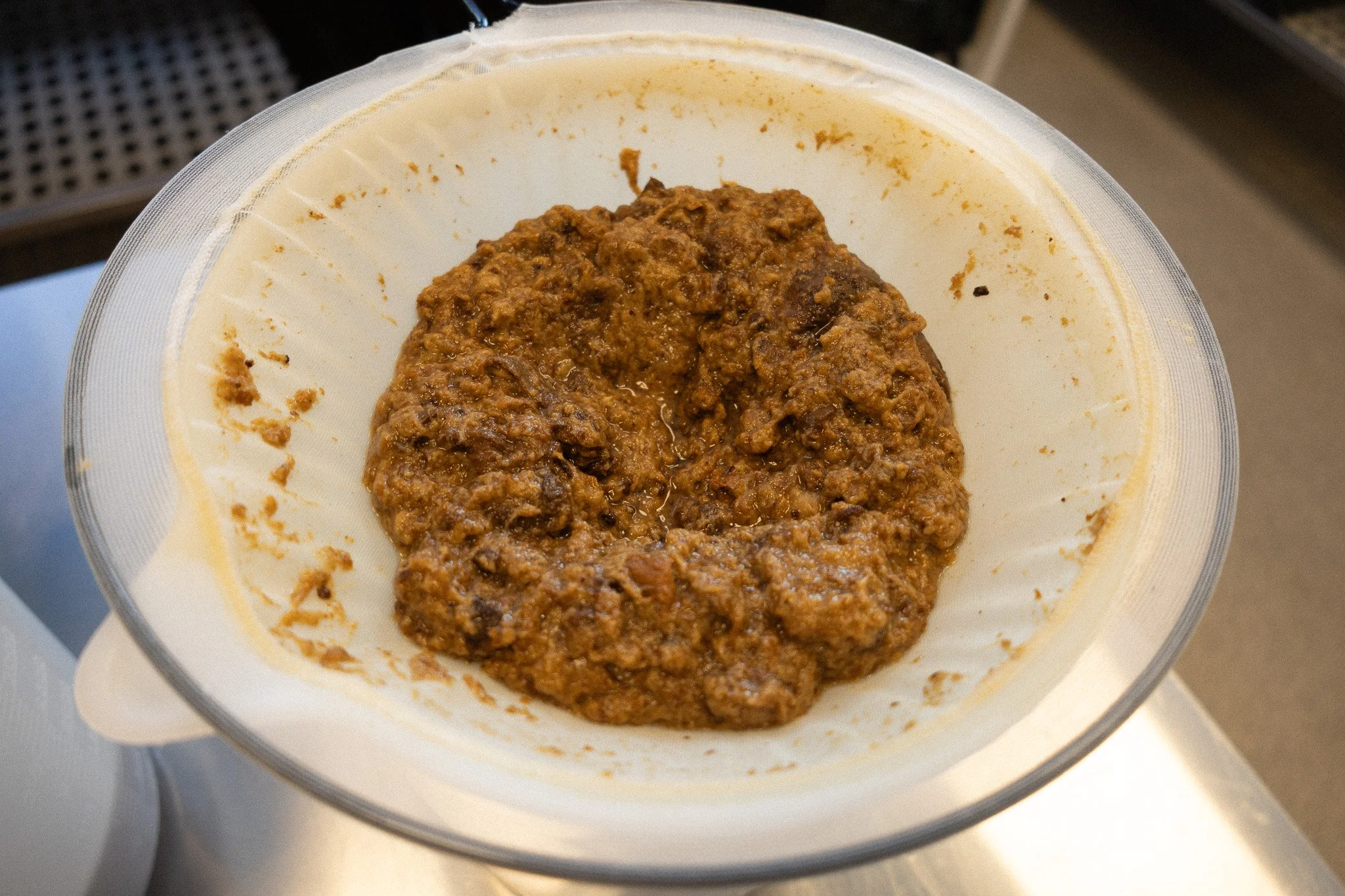Bread syrup
This is part of our series on upcycling bread by-products.
Table of Contents
i. Background
This recipe uses enzymes, heat and water to transform waste bread into a sweet syrup. Treating the bread this way is a bit like taking apart a Lego model (complex carbohydrates/polysaccharides) into its individual Lego pieces (simple sugars).¹
This syrup can be used as an ingredient in any recipe that requires both sweetness and saltiness. It has a distinct bready or malty flavour, which is delicious in many applications, though less suitable in others. Following this recipe should result in a syrup of around 20 ˚Brix, which can then be further diluted or reduced to any sugar percentage for use in different applications like ice cream or sweets.
After extracting the syrup, a solid by-product of insoluble fibre and protein is left over, which can also be used as an upcycled ingredient, e.g. to make miso (recipe coming soon).
ii. Recipe
Ingredients
3500g fresh bread, or 2450g dehydrated bread, torn into rough pieces
9625g water (if using fresh bread) or 10,675g water (if using dehydrated bread)
9.4g Ondea pro (enzyme)
5.4g Termamyl (enzyme)
Method
Bring a pot of water to 70°C, using a thermometer to monitor the temperature. Add the bread and allow it to cool down to 53°C.
Add the enzymes and cook at 53°C for 40 minutes (optimal temperature for first stage Ondeapro), stirring every 10 minutes so that the bread starts to break down evenly.
After 40 minutes, raise the temperature to 62°C (optimal temperature for second stage Ondeapro). Hold at 62°C for a further 60 minutes, again stirring every 10 minutes. The mixture will now quickly become very liquid.
After 1 hour raise the temperature to 73°C for 1 hour (optimal temperature for Termamyl). Hold at 62°C for a further 60 minutes, again stirring every 10 minutes.
After 1 hour raise the temperature to 85°C for ten minutes (optimal temperature for viscosity when separating the liquids).
Strain the mixture through a fine muslin cloth. If you want to make miso with the solid by-product, for best results, leave it straining in the fridge overnight—the more syrup removed, the better. You can also further filter the strained liquid to make a clearer syrup, if desired, e.g. through ice filtering.
After straining, bring the liquid to a boil for 5 minutes. This step is to denature the enzymes and therefore should not be skipped.
Allow to cool and store.
The solid by-product left over after straining.
iii. Adaptations
The enzymes we used here are more typically produced in industrial quantities, and you might not necessarily find it easy to get hold of them. You can try to adapt this recipe to use different enzymes; for example, amylase can be easily purchased from most homebrew shops. However, if you do use different enzymes, you will need to tinker with them to find the right amount to add and the temperature to cook at. Alternatively, you could also try to make a kōji-based amazake-style syrup, which might have a more savoury flavour since it would contain protease. Again, you would need to tinker with the recipe to get it right. Depending on which enzymes and method you use, you might get a final product that is more or less sweet than this base recipe, but any syrup can be condensed or diluted according to need.
You could try to make this recipe from stale pastries instead of bread, though their fattiness will impact the final product, potentially changing their flavour and which applications it is suitable for.
Whilst you might be tempted to try using this syrup to brew beer, it’s probably a little bit too salty for that: American Goses, for example, are among the saltiest beers, but this syrup has 100 times more salt per litre than them.
Contributions & acknowledgements
Kim conducted the original R&D. Eliot documented Kim’s recipe with notes and photographs and wrote the article in discussion with Kim. Josh contributed editorial feedback.
This recipe has roots in Kim’s previous work as Head of R&D at the former Amass Restaurant in Copenhagen. Thanks to Amass for facilitating such trailblazing work in culinary upcycling and holistic sustainability.
Related posts
Endnotes
[1] We live in Denmark, so we can’t help using a Lego analogy.



